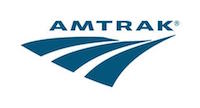
The first two lawsuits related to the fatal derailment have been filed and include claims from a conductor on the train as well as a passenger.
48-year old Garrick Freeman was new to the route and on the train in the lead locomotive for a familiarization run. It is not uncommon for conductors to do ride-alongs on routes they’ve never traveled before. Authorized to apply an emergency brake if they deem it to be necessary, conductors hold responsibility for the safety of the entire train’s operation and will remind the train’s engineer of speed limit changes and other track-related events that occur throughout a route.
According to the lawsuit he filed against Amtrak, Freeman suffered rib and hip injuries along with pain and emotional shock as a result of the crash. After his discharge from the hospital, he was expected to require a one- to two-month stay at a rehabilitation facility for further care. Freeman’s attorney has indicated that he plans to name other entities in the suit as well.
Passenger Pennie Cottrell filed her lawsuit the same day as Freeman. Cottrell was traveling in the Number 7 rail car – “the one was dangling off the rail,” as described by her attorney, referring to the now famous image of the aftermath of the derailment. Cottrell escaped the incident with her life but suffered broken ribs, a fractured clavicle, and other internal injuries as a result.
Many of the suits will likely focus on the fact that positive train control had not been implemented on Cascades 501. Designed to automate the process of slowing down an overspeed train, positive train control is a safety layer that takes the decision to apply a train’s brakes out of the engineer’s hands and automatically applies them if the train crosses a certain speed threshold. The system was also at the center of attention for Amtrak 188; the 2015 Philadelphia crash that killed eight when a train moving through a sharp-turning section of track derailed after entering the turn at more than 50 miles per hour over the speed limit.
